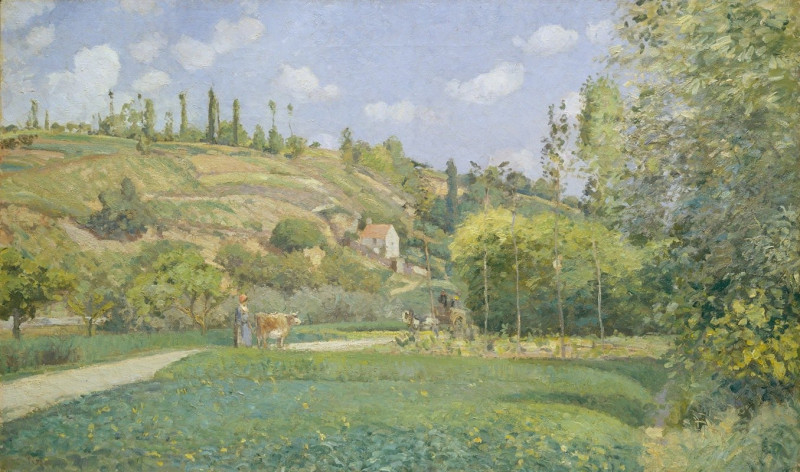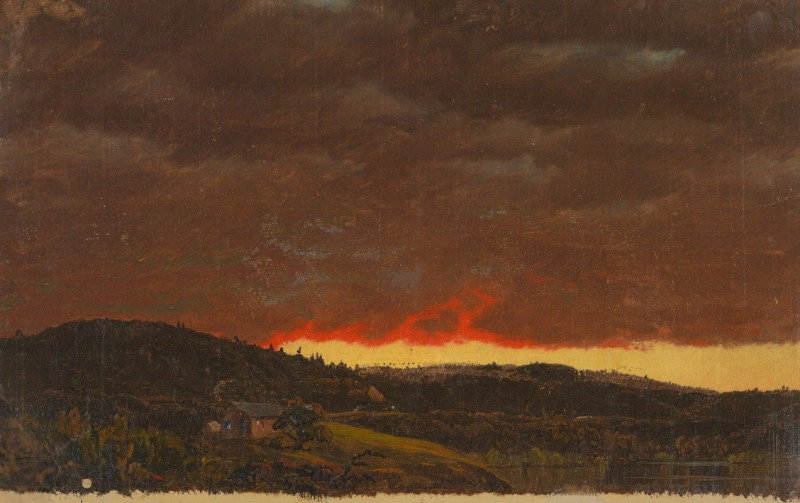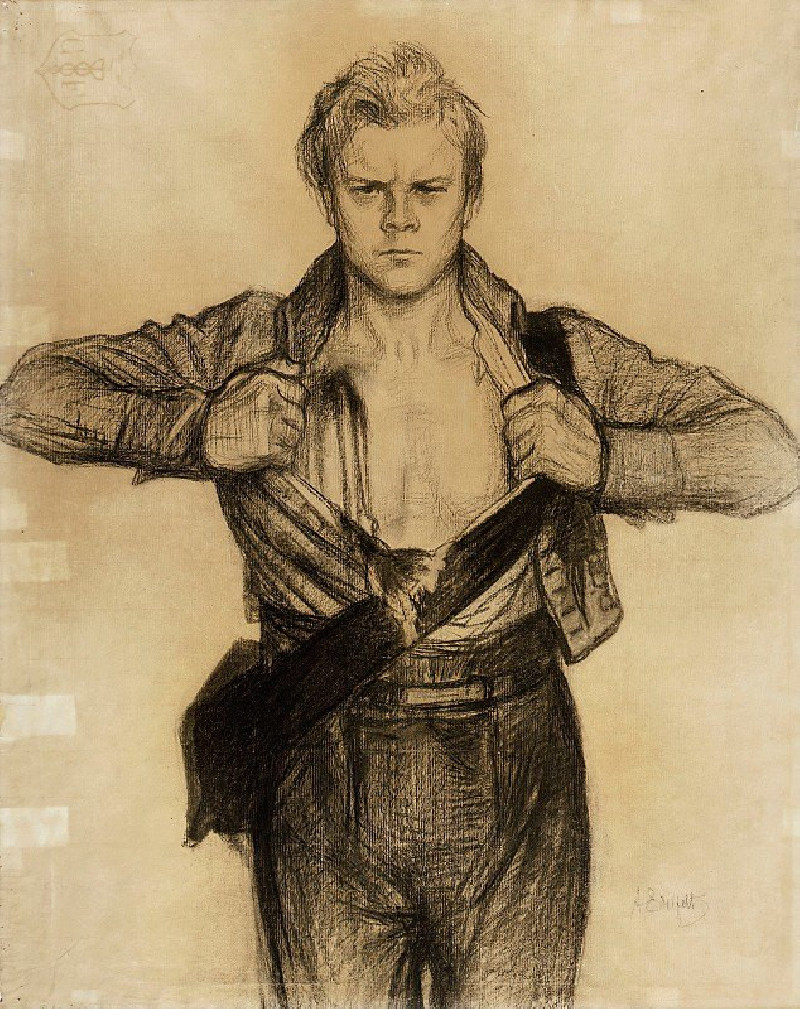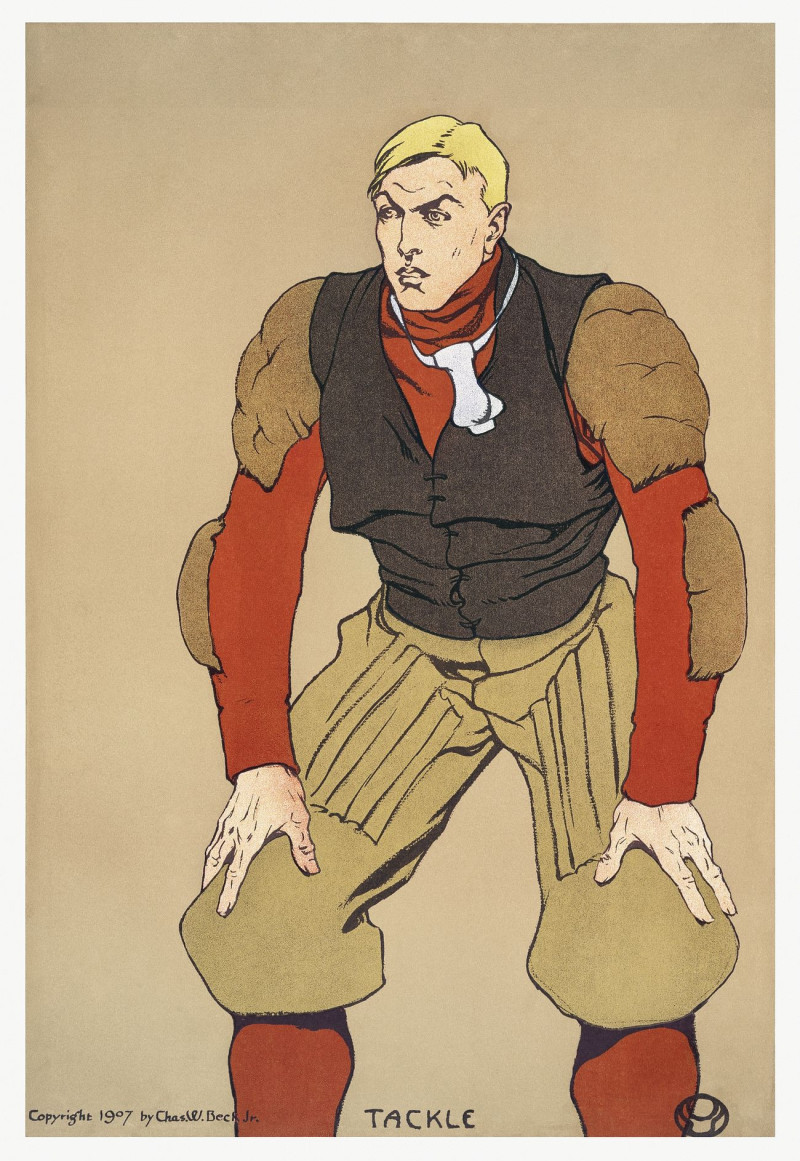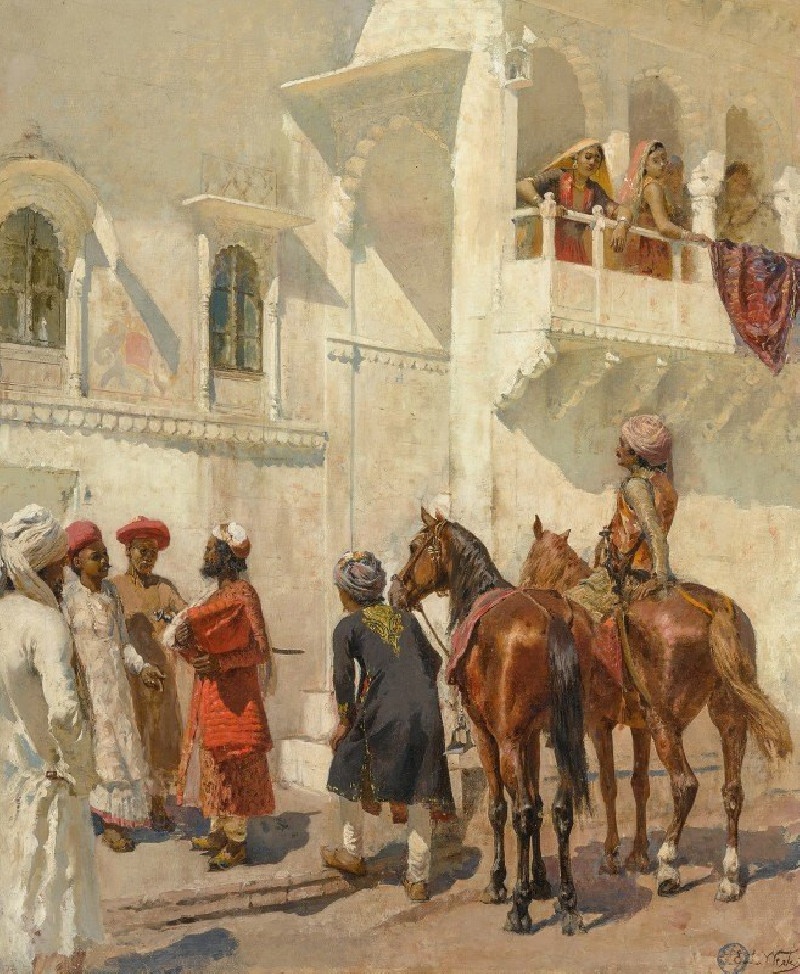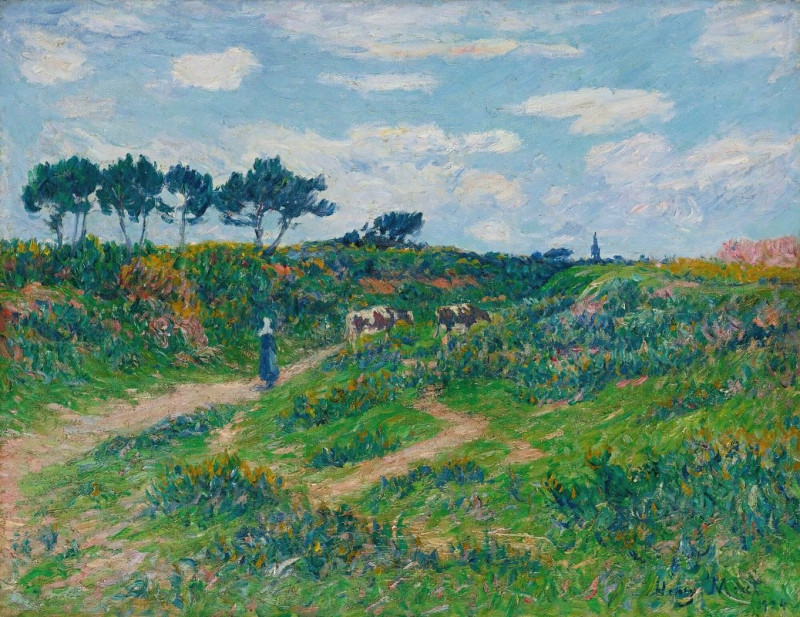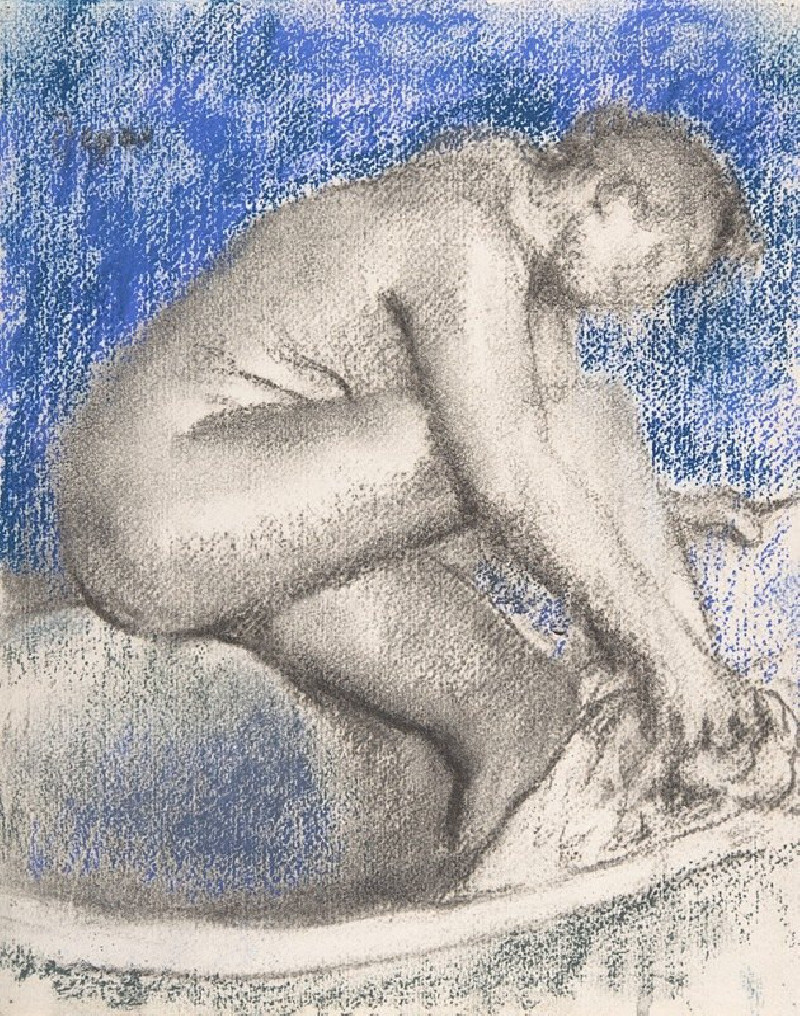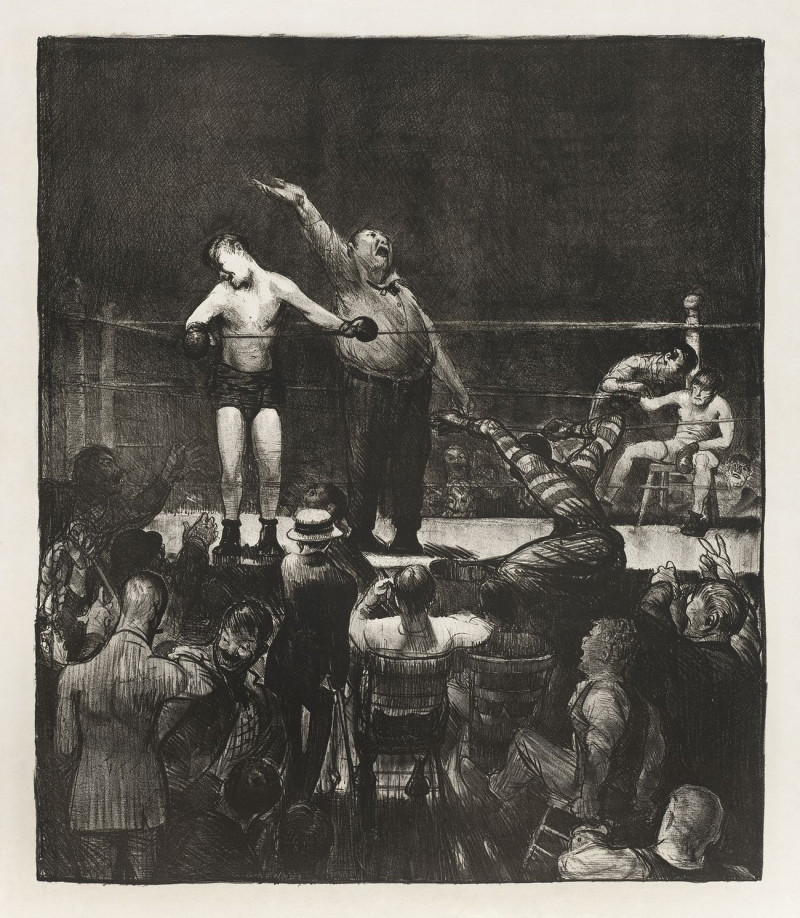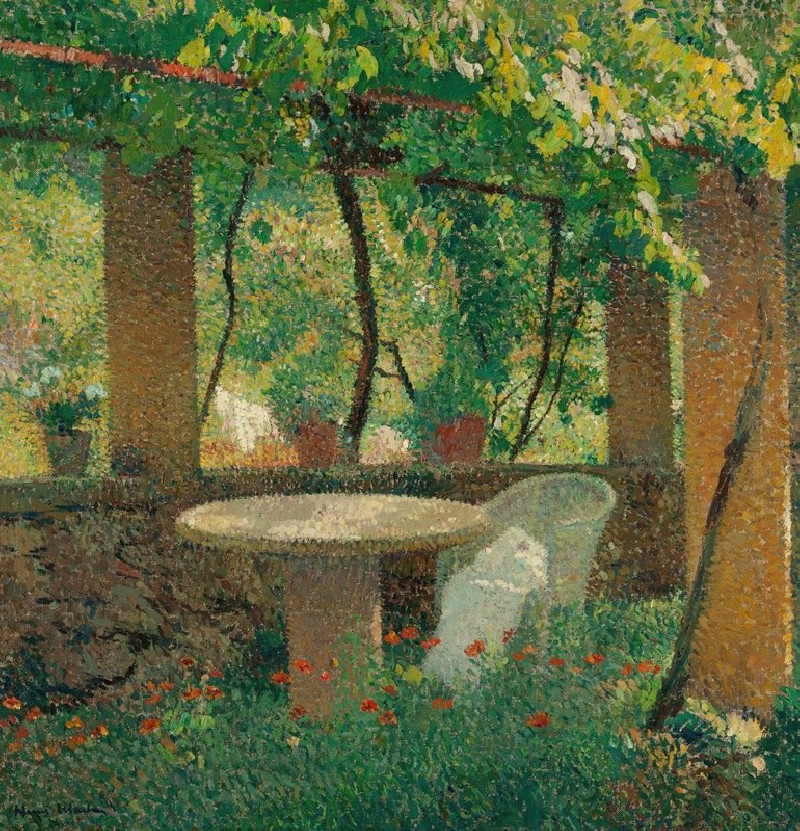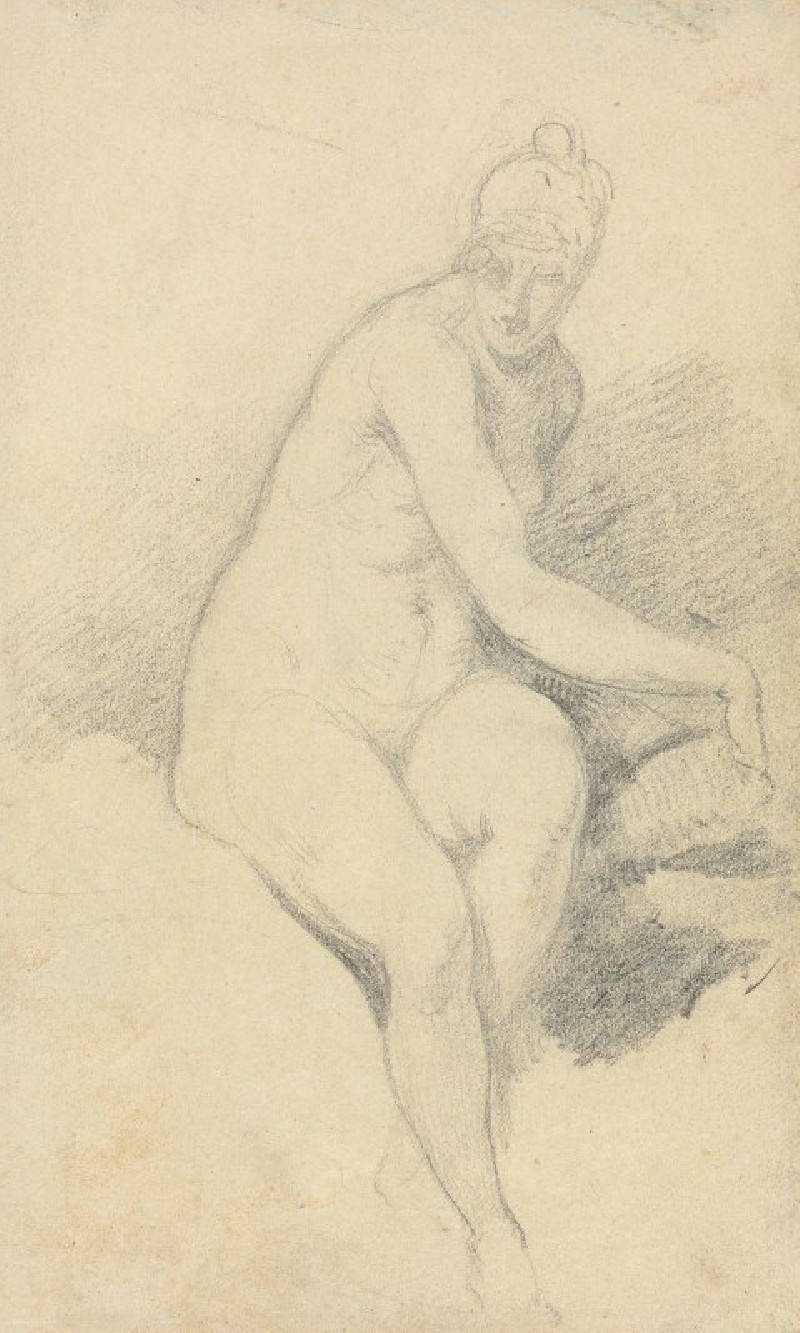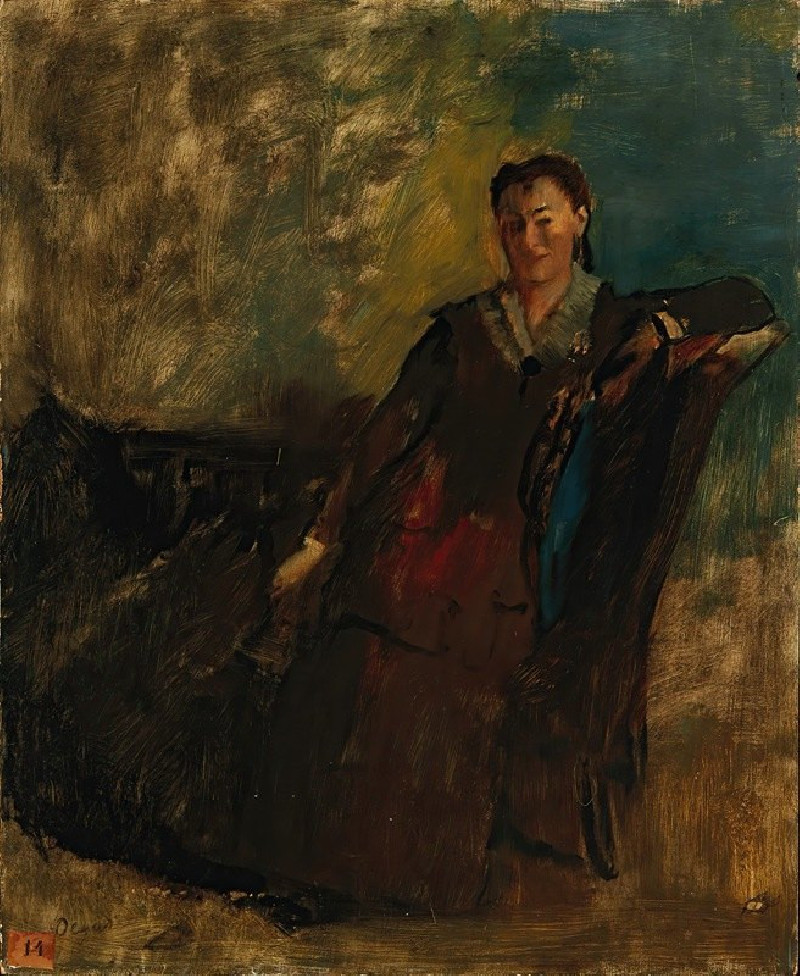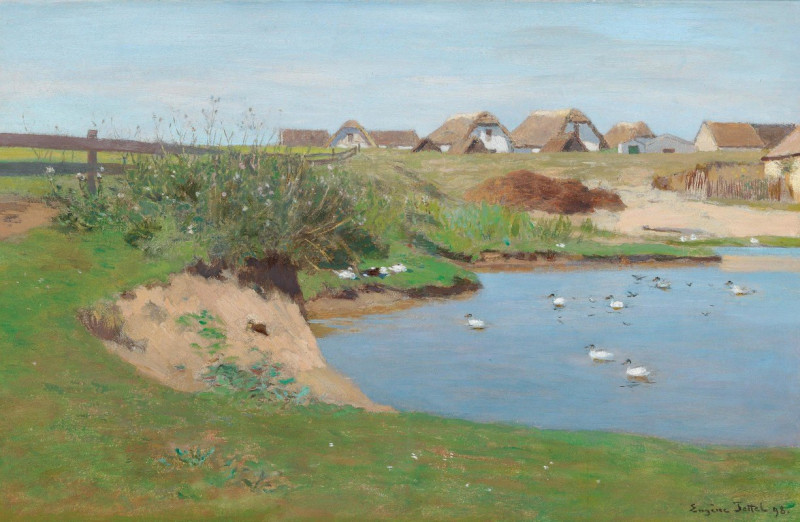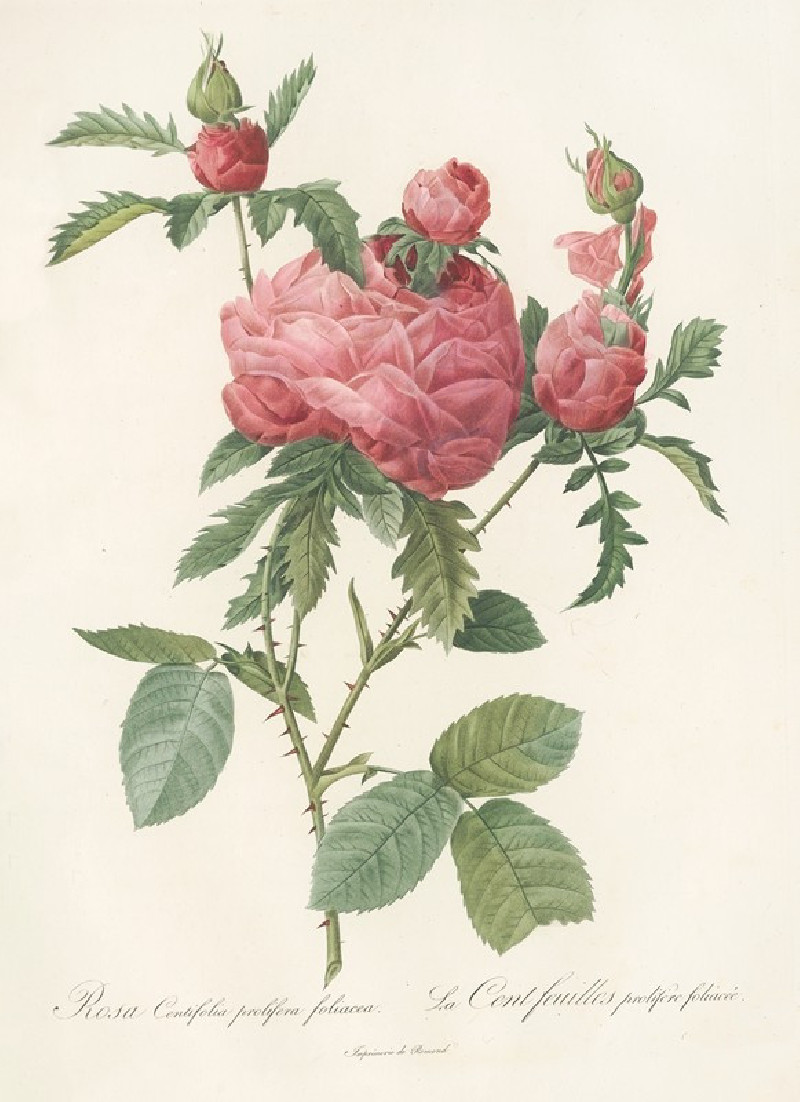A Cowherd at Valhermeil, Auvers-sur-Oise (1874)
Technique: Giclée quality print
Recommended by our customers
More about this artwork
"A Cowherd at Valhermeil, Auvers-sur-Oise" (1874) is an enchanting landscape painted by the esteemed Impressionist artist, Camille Pissarro. The scene captures an idyllic rural charm, illustrating the serene beauty of the French countryside at Auvers-sur-Oise.At the heart of the painting is a cowherd, a figure clothed in traditional rural attire, leisurely tending to a cow. This pastoral subject is masterfully depicted against a picturesque backdrop of rolling hillside terrains dotted with lush trees and a sprinkling of farmhouses. The use of light and shadow, and the vibrant, yet soft color palette, enhance the tranquil and harmonious atmosphere of the countryside.To the left, the canvas features verdant fields under a gentle sky, while a dense cluster of trees fills the right, framing the composition naturally and drawing the viewer’s gaze across the landscape. A subtle activity on a distant path, where figures accompanied by oxen carts hint at the daily routines of rural life, adds a dynamic element to the otherwise peaceful scene.With his delicate brushwork and keen observation of natural light, Pissarro encapsulates a moment of simple beauty and daily life, inviting viewers to appreciate the timeless allure of nature and the traditional lifestyle of the French rural landscape.
Delivery
Returns
Blessed are they who see beautiful things in humble places where other people see nothing. — Camille Pissarro
Camille Pissarro (1830-1903) was born on St.Thomas (now the US Virgin Islands) to a Portuguese father and a Dominican mother. He went to Paris to study art at Ecole des Beaux-Arts. He was an early pioneer of pointillism and neo-impressionism and later became a mentor of many famous impressionist painters including Cezanne, Manet, Renoir, and Gauguin. His paintings depicted rural and urban French landscapes and lifestyle. Many of his works politically captured images of peasants and laborers. Today, he is considered the father of impressionism.

